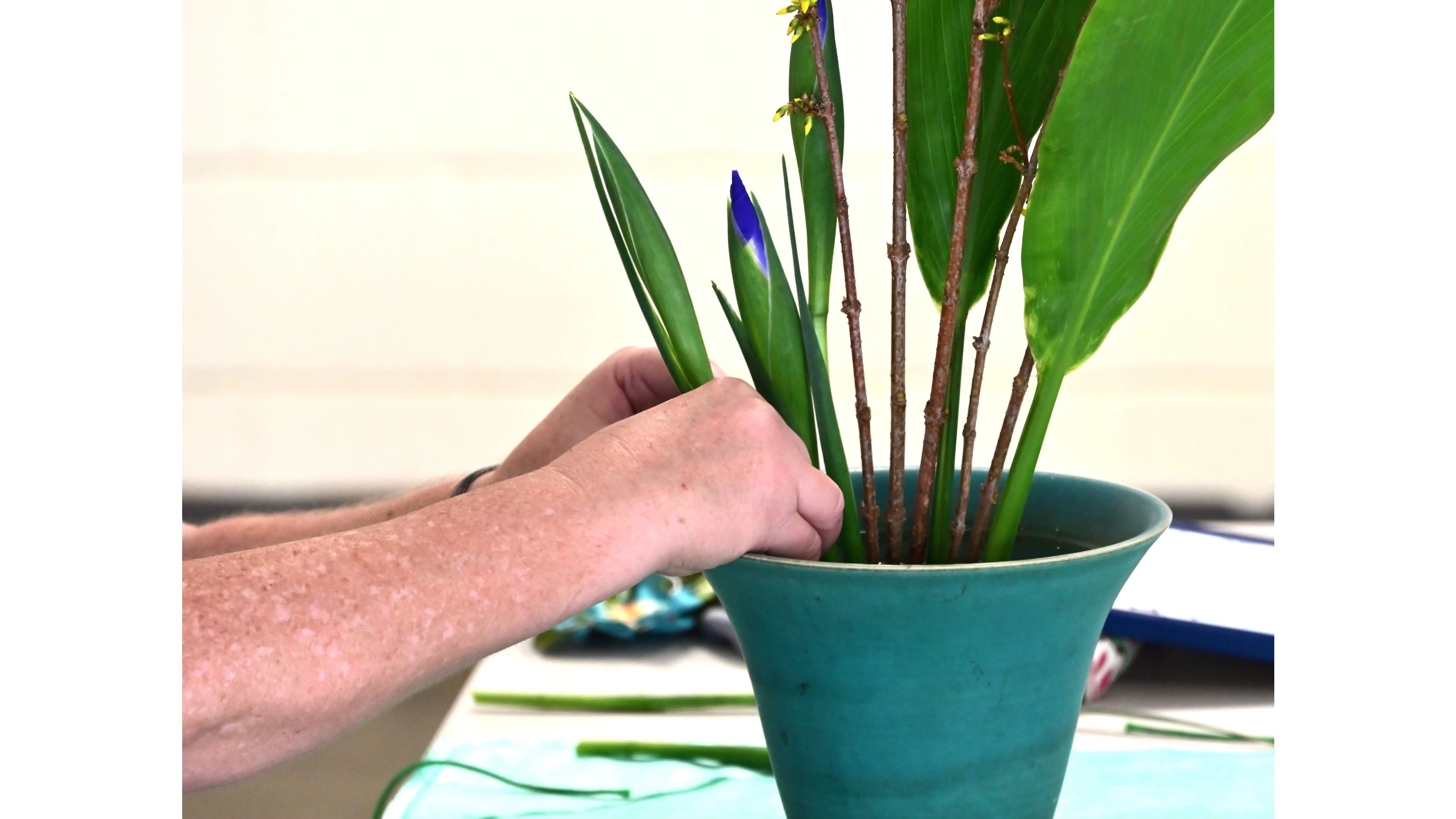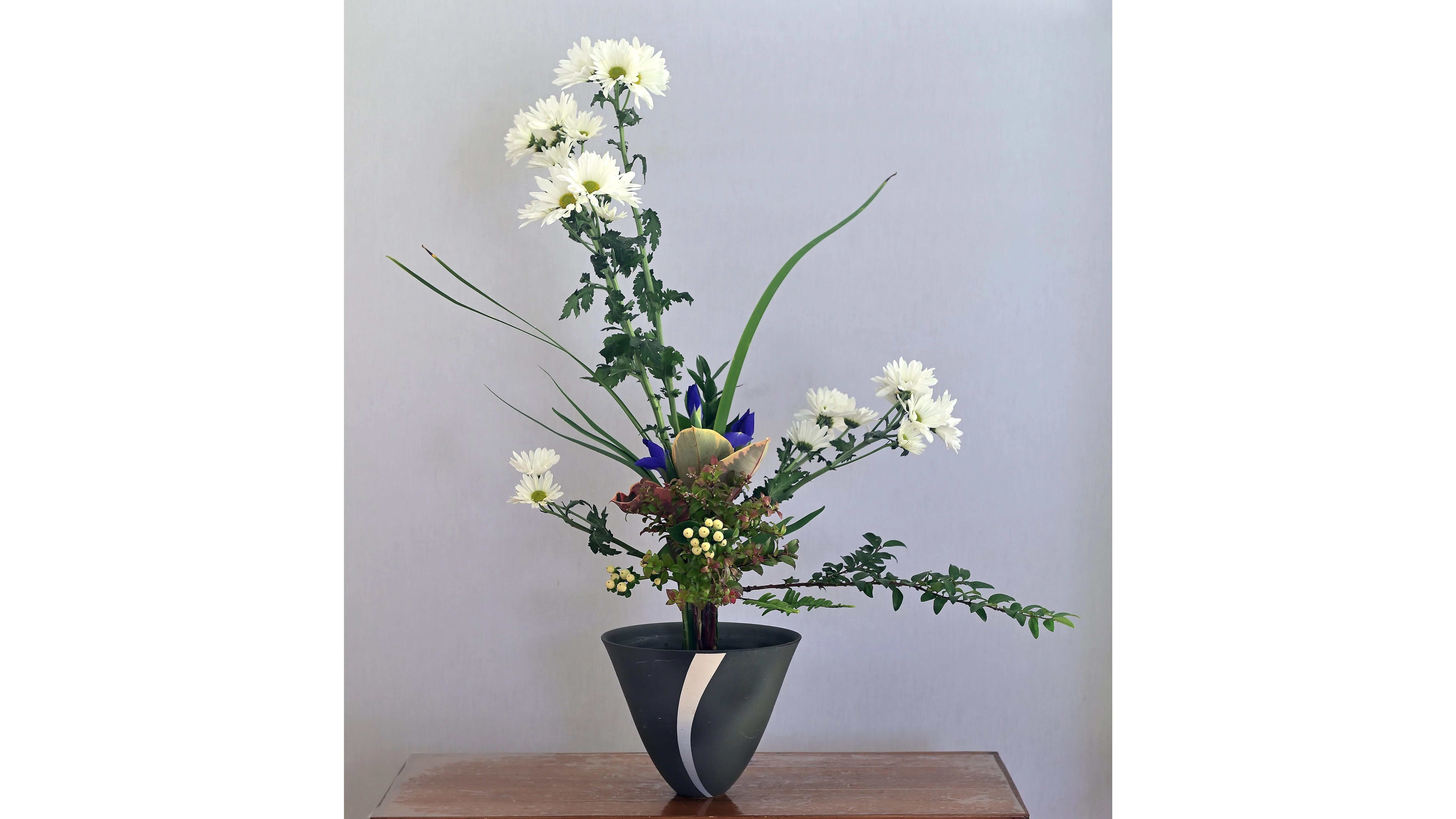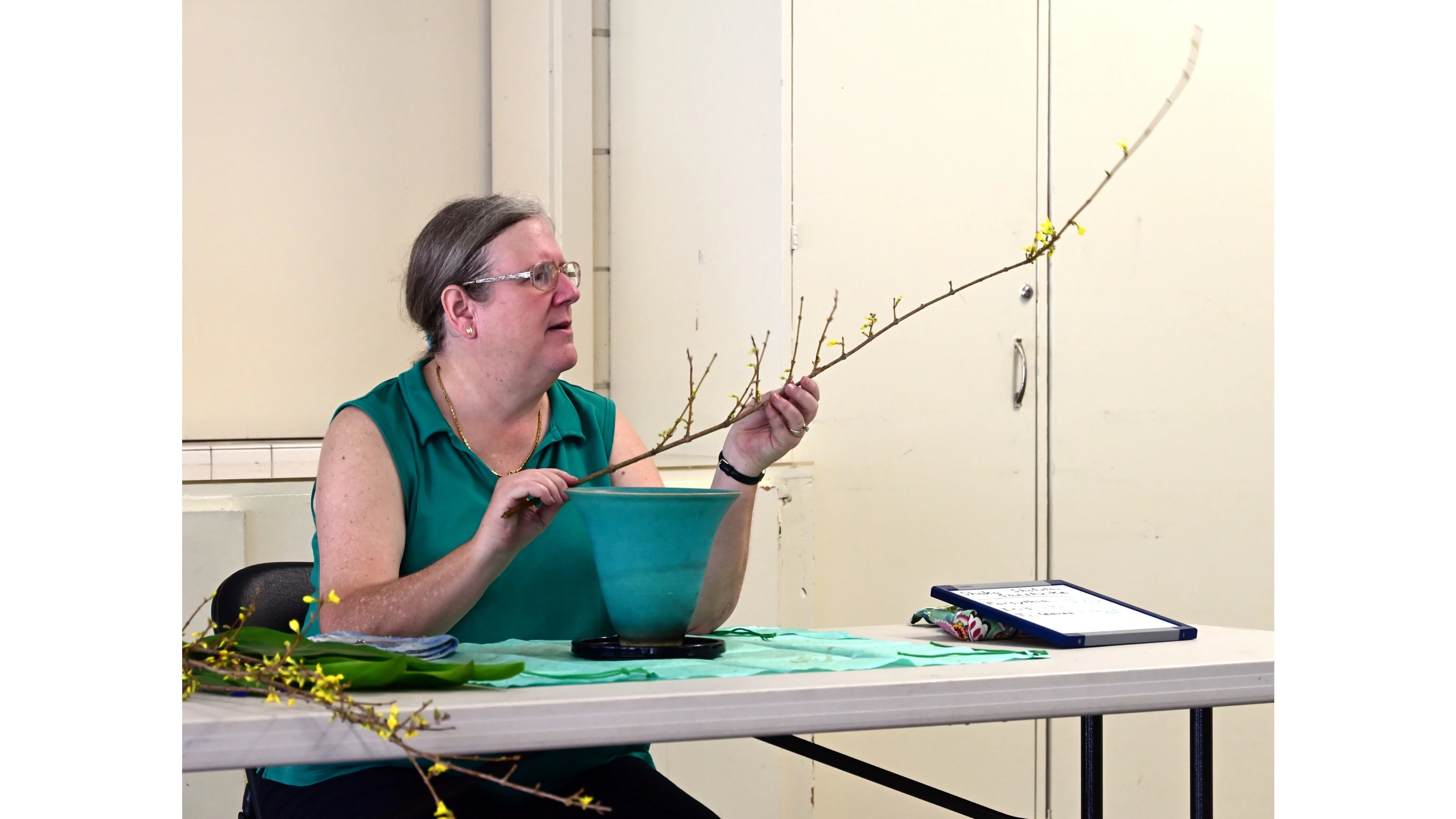Kailua resident Barbara Tinius slips into a Zen-like state whenever she works with flowers. She is an accomplished member of Ikenobo, the oldest school of ikebana, the Japanese art of flower arrangement. Founded in the 15th century by Buddhist monks, Ikenobo has members in some 33 countries, from Argentina to Australia, India to Ireland, Turkey to Thailand.

“When I’m working on an arrangement, I’m focused on that, and I put everything else aside,” Tinius said. “I’m seeing the colors of the flowers and inhaling their fragrance. I’m feeling the texture of leaves and thinking about how things grew. Was a branch growing straight up or beside a bush? Did flower stems sprout between leaves or outside of them? All that matters because ikebana is supposed to imitate nature.”
Tinius’ path to ikebana was somewhat circuitous. While working in Tokyo as an analyst for the Department of Defense (DOD) from 1987 to 1992, she took classes in shodo (calligraphy), sumie (ink brush painting), bon odori (bon dance), chado (tea ceremony) and Japanese cooking. In 1990, she noticed that an ikebana class was being offered at the rec center on base, and she immediately signed up for it.
“It was logical for me to try ikebana next,” Tinius said. “The class was convenient, and it was taught in English. When I returned to the U.S., I missed ikebana. It was nice having fresh flowers in the house year-round. Composing arrangements was a great way to decompress after a hard day, and I had been feeling more and more confident about my skills.”
There are three arranging styles in Ikenobo. Rikka has nine main elements, and strict rules dictate where they can be placed and at what angles. Nearly all the materials are wired. This secures rikka’s complex form, which represents the mountains, valleys and rivers of a natural landscape.

Wire can’t be used to adjust the shape or direction of any materials in Shoka, which has three primary components. “You have to know what you can bend, and there are different bending techniques depending on how hard something is,” Tinius said. “You learn to work with patience and care after breaking lots of branches.”

Novice ikebana students start with Jiyuka, the simplest Ikenobo style because it allows freedom of expression with no strict rules. Because it is less structured, designs reflect the creators’ personal vision and preferences.
There are 18 certification levels in the Ikenobo School, each indicating increased knowledge and competency. These are demonstrated in part via quizzes—a specific number and style of arrangements, possibly 30-plus over a set period (minimum of three months to five years)—that are judged by an Ikenobo sensei (teacher).
Tinius has pursued certifications since 1993, even while she and her husband, Roger, were stationed in Germany for five years. By the time they accepted DOD jobs on O‘ahu in 2008, she had progressed to Level 10. She retired from the DOD in 2019 and earned Level 16 certification last year.
Even if such achievements aren’t in the cards for budding ikebana enthusiasts, Tinius offers them a few valuable tips. First, the container is as important as flowers and greenery. It doesn’t have to be a vase. Tinius has used bowls, boxes, baskets, Christmas ornaments, wine glasses and even a cast-iron skillet for her arrangements.
Second, open space is key. “It adds breathing room, so the eye is drawn to the principal elements,” Tinius said. “It is not just emptiness. It has shape, and it has purpose. Over time, you learn how to use space as a tool. Where it’s placed in your design requires as much thought as where you put the leaves, branches, stems and flowers.”
Third, aim for seemingly contradictory “asymmetrical balance”; for example, use odd numbers of flowers, place them at different heights or set them on one side of the container. Tinius asserts the result will look more natural, interesting and attractive than one that is perfectly aligned.
Last, but not least, “Be in the moment,” she said. “Relax and enjoy the process. Don’t worry about making mistakes; everything can be easily repositioned. Appreciate the beauty of the materials you’re working with and let them guide you.”





